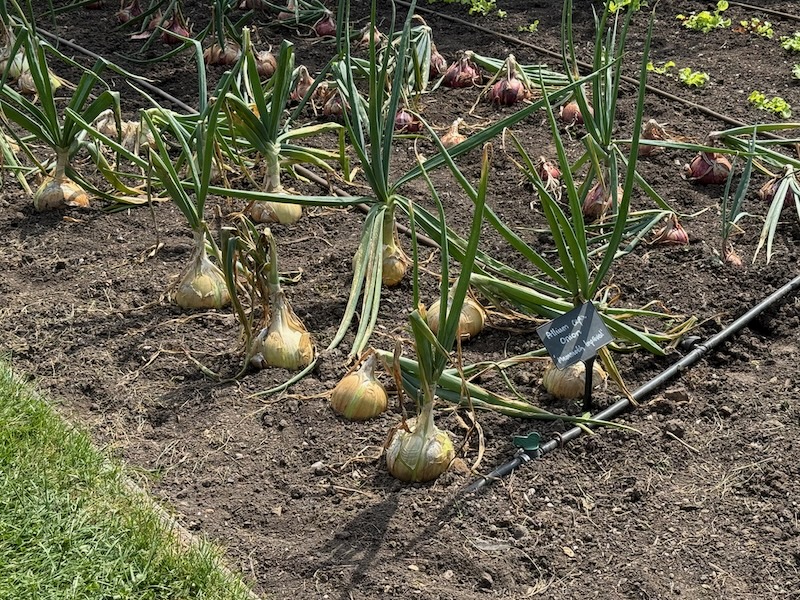Our Blog - August 2025 - England trip - Standen House and Gardens
The Standen House was built between 1891 and 1894 by James Beale, a London-based attorney, and his wife and 7 children. He wanted to build a house in the countryside as a retreat for holidays, weekends, and eventually retirement. They wanted a comfortable house in the country, not a lavish stately home. They were also very interested in what is called the "Arts and Crafts" movement.

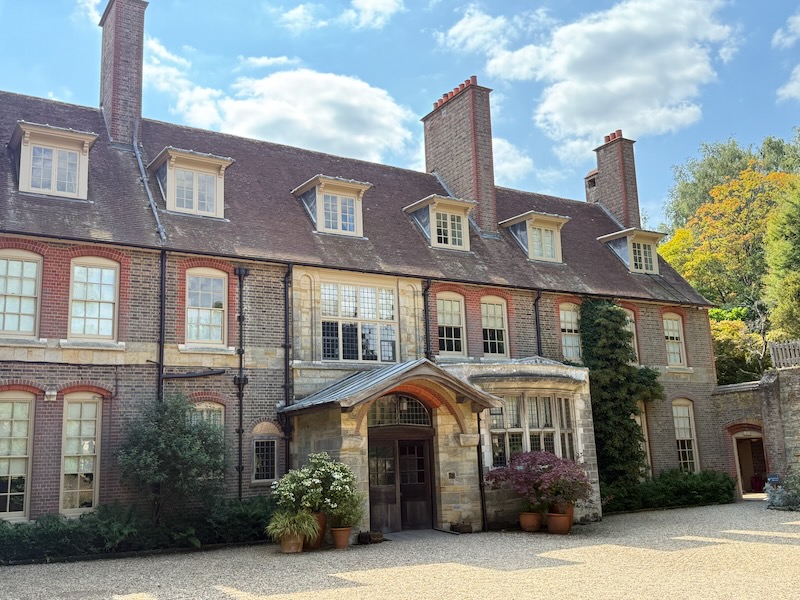
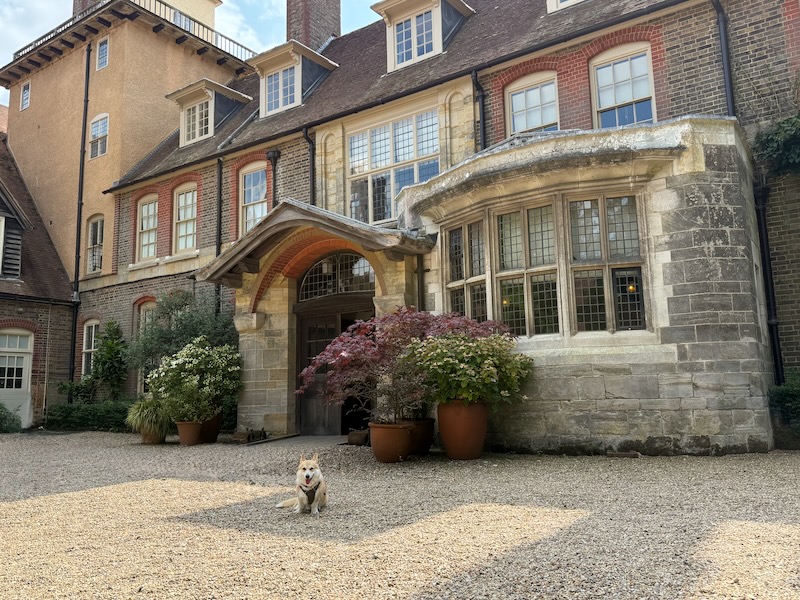
Throughout the house, they had a discussion about what is meant by "Arts and Crafts". We always use the term to mean hobby things that people do, like painting, paper crafts, etc. But there is an actual "Arts and Crafts movement" that formed in the mid-19th century in England. Rather than describing how objects look, the movement is about the way they were made and the materials used. According to the information, it is an expression of honesty, tradition, beauty, skill, and originality. I'll mention it more as we go through.
While not a stately manor house, it did have all of the modern conveniences at the time, including central heating and electricity. This is an example of the original lamps that were used.
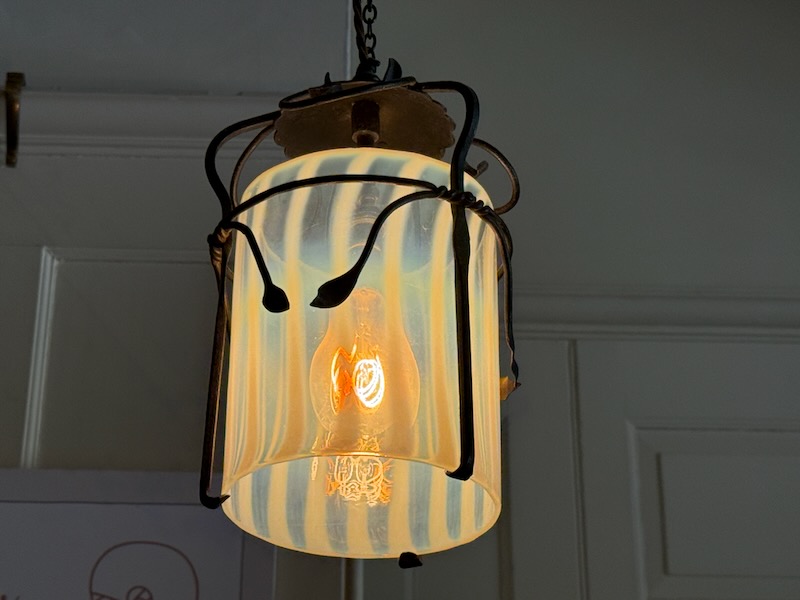
Even though it was only a country house, they still had a billiard room to reflect the social status of the Beale family. This is where the gentlemen would relax, smoke and play billiards. However, the Beales’ youngest daughter, Helen, became an expert player and entered ladies’ competitions.
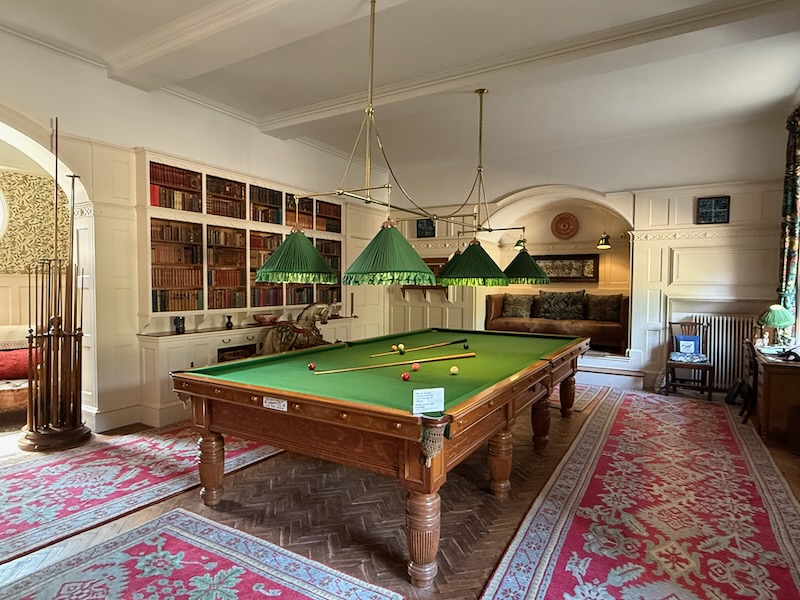
The drawing room is one of the largest in the house and it is where the family would entertain friends.
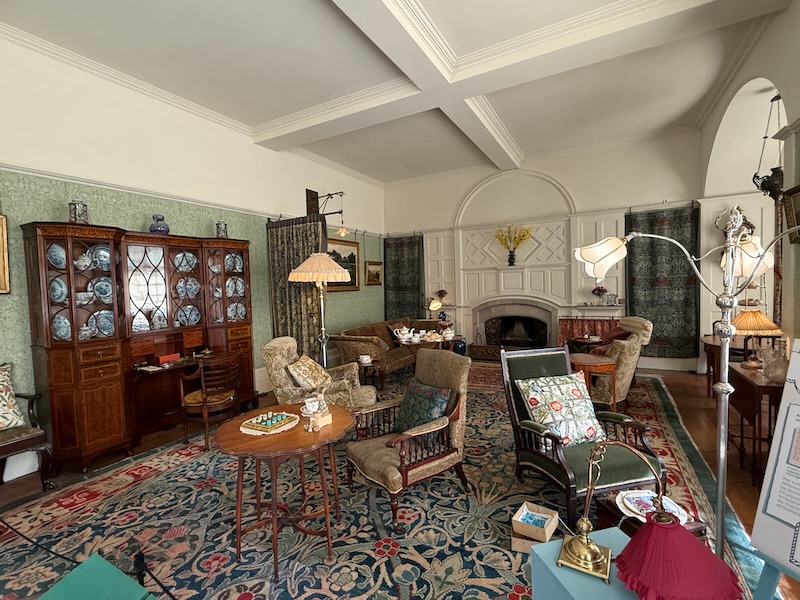
The staircase has an impressive smoked oak balustrade (smoking brings out the grain of the wood) with flat banisters up the stairs.
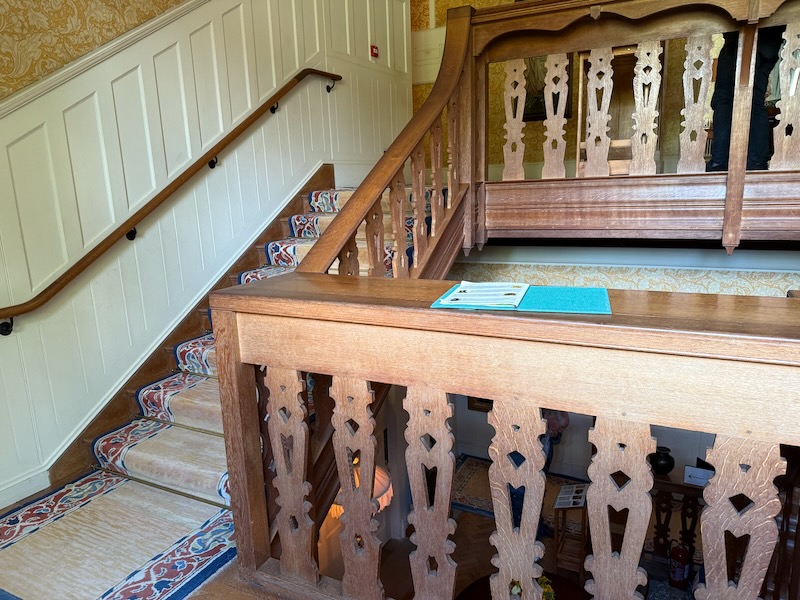
Upstairs were the bedrooms. This first one has a bedroom set that is made of rosewood with marquetry inlay. Going back to the Arts and Crafts movement, this type of inlay takes a great deal of skill and workmanship. The wall hangings on either side of the fireplace were made by Mrs Beale and her 3 oldest daughters. s
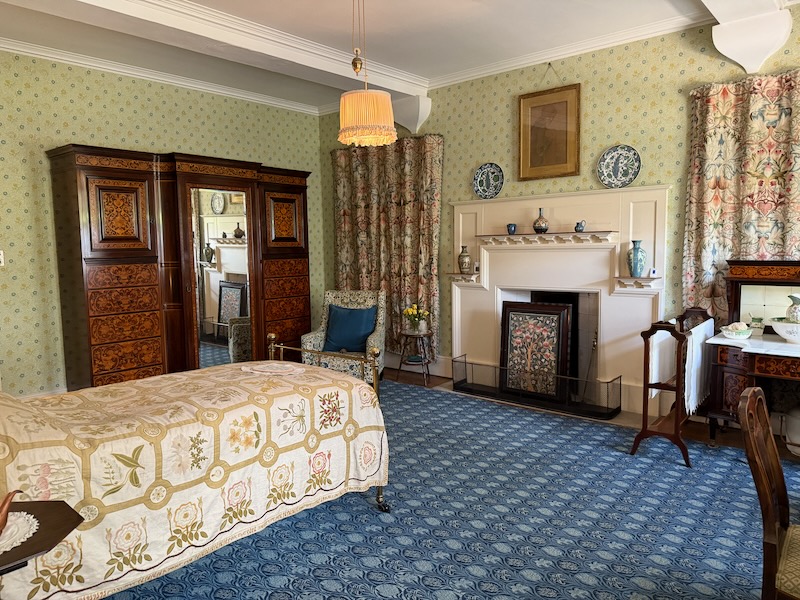
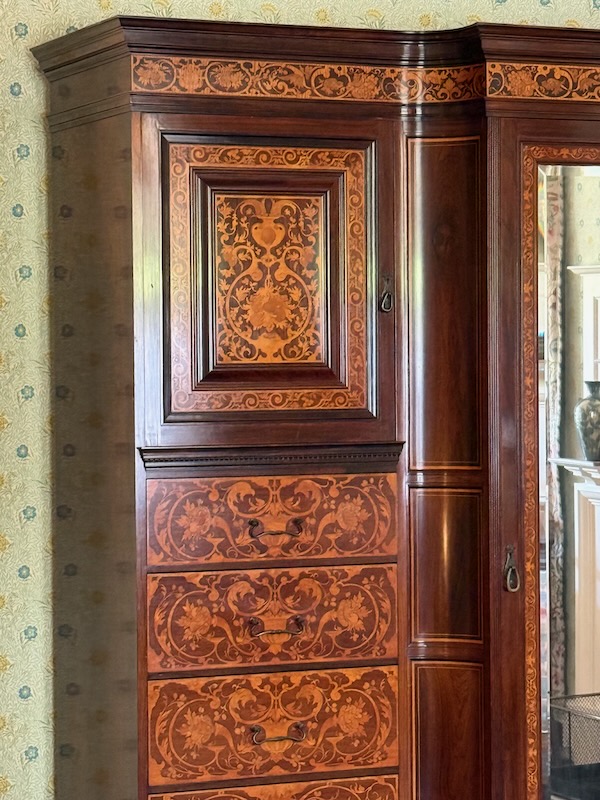

Okay ... who EVER thought that green tile was a good look for a bathroom???
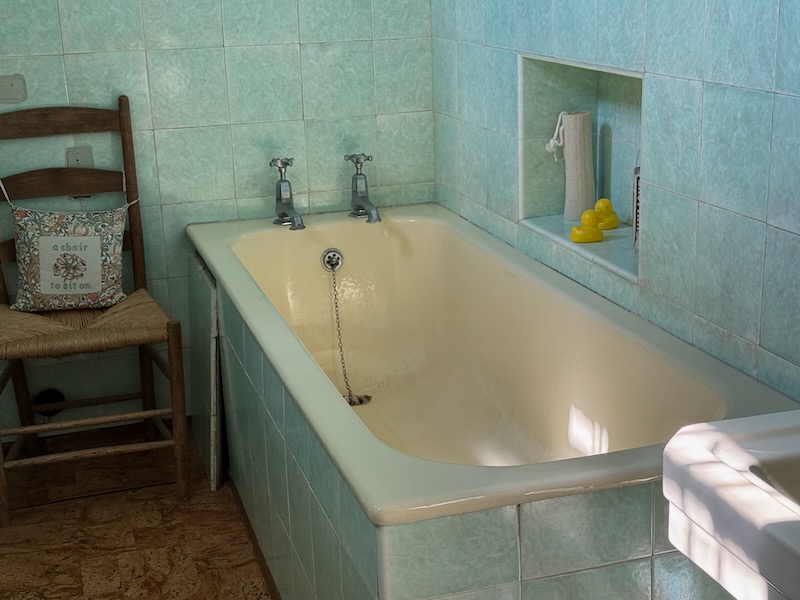
Another rosewood cabinet with inlays.
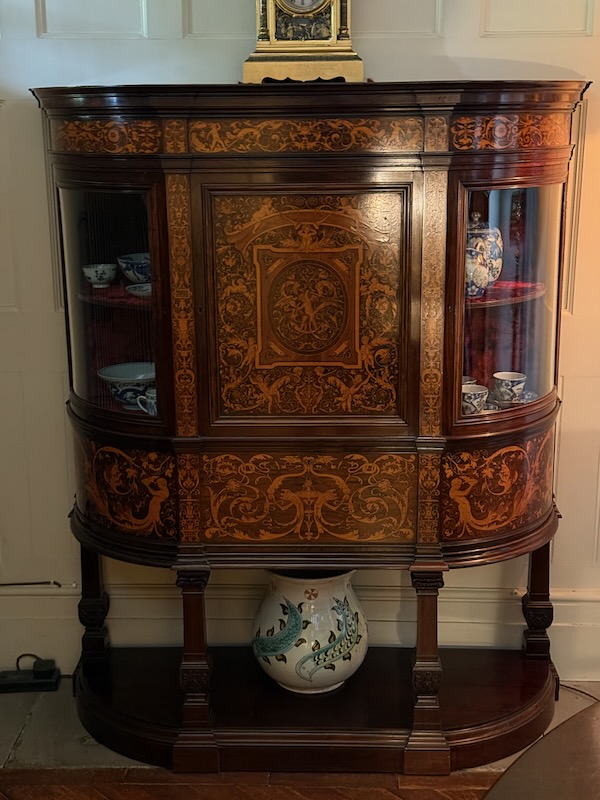
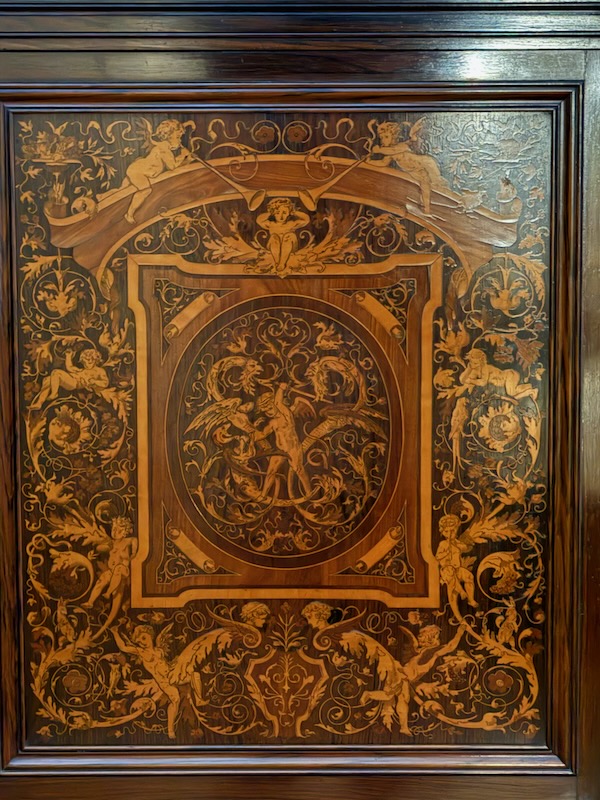
The dining room has several walls that have built-in shelves to display the china collection.
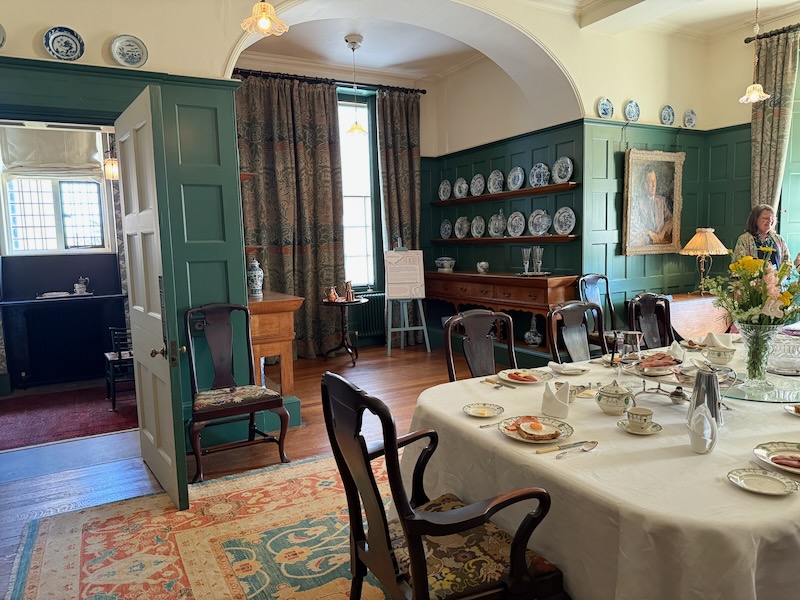
Another point on the Arts and Crafts movement was they they were against cheaply-made factory goods and focused on making objects that were hand made and built to last with local materials and local labor. This thought was inspired by medieval craft guilds, which valued fair labor, skilled craftsmanship, and workers dignity. Furniture should be made start-to-finish by one person, instead of having factory workers perform a single task for every piece of furniture (which would make that task repetitive, boring, and unfulfilling).
The Morning Room faces South and East, giving it the vest view over the valley and lots of light throughout the day. This was perfect for the ladies, who used this room for writing letters and working on the embroidery items that are seen in the house.
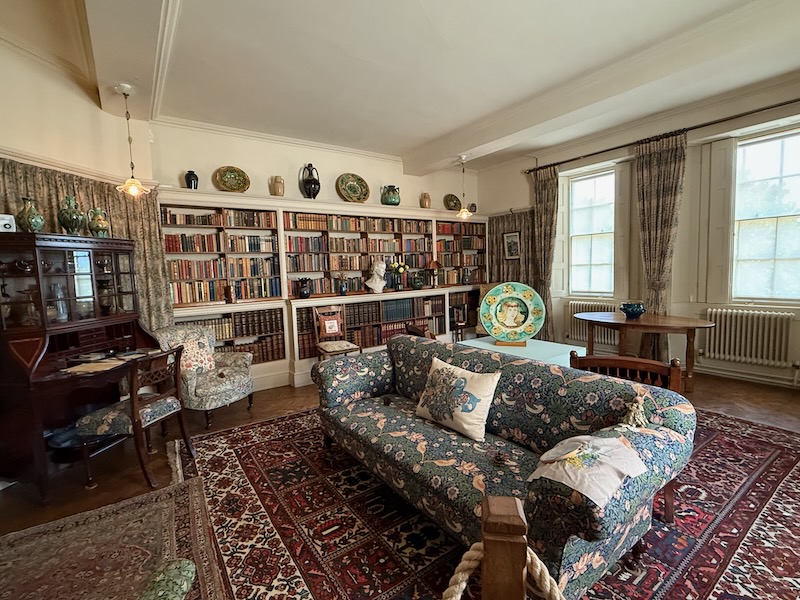
And lastly, the kitchen. It is a large and airy kitchen, which was quite unusual for its time. In the Victorian era, it was common for the kitchen to be hidden away in a basement. There are 2 stoves: one to heat water and the other for cooking. The range with the white border was installed in the 1930's and is a cast iron stove with 2 ovens, the range top, and 2 warming shelves (one is open with plates in it).

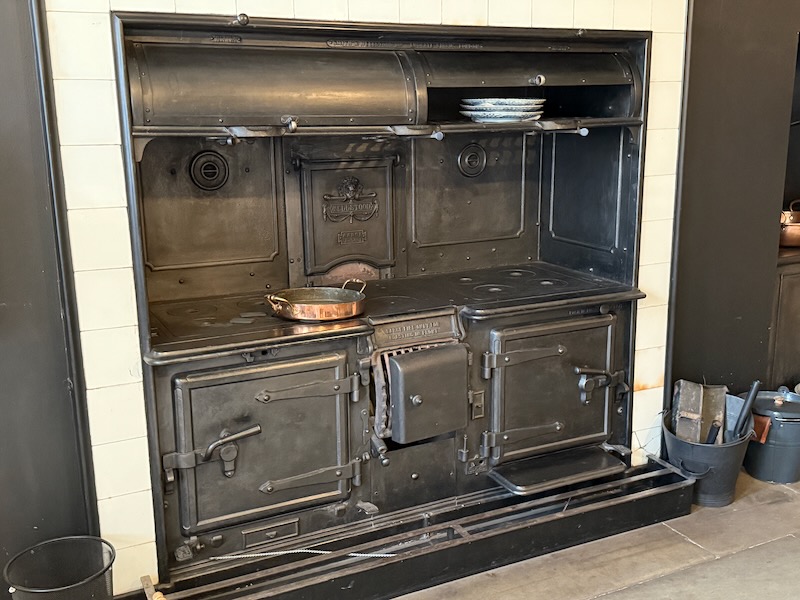
Then back for a stroll through the garden ... I didn't know that onions grow on top of the ground!
